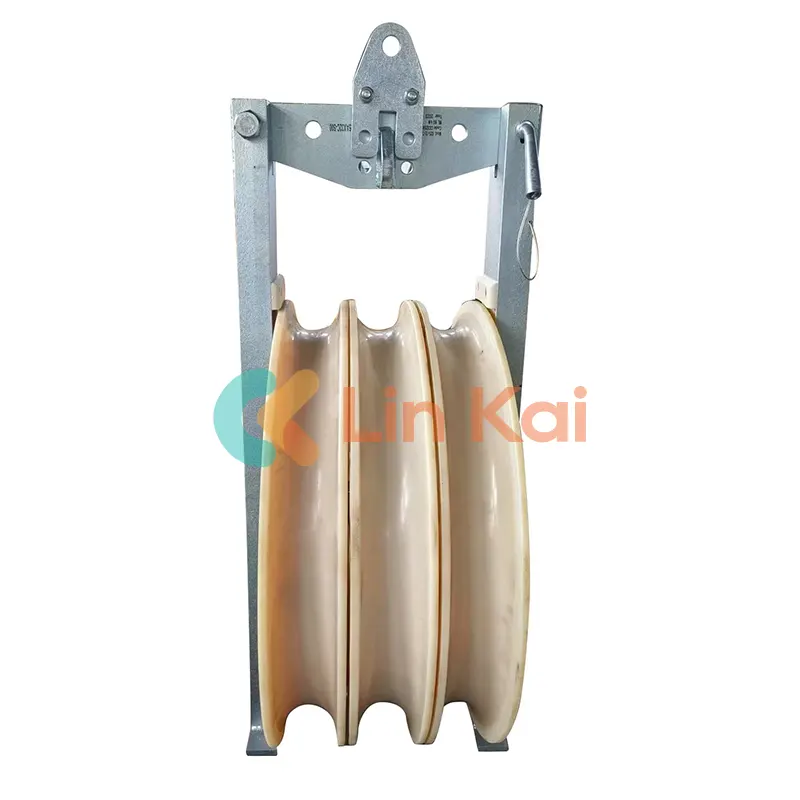How do you select the right Stringing Block for different cable types?
2024-10-30
Selecting the right stringing block for different cable types is crucial for ensuring safe and efficient operations. Here’s a guide to help you make the right choice based on various factors:
1. Cable Type and Size
- Determine Cable Specifications: Identify the type of cable you’ll be stringing (e.g., electrical, telecommunications, or fiber optic) and its diameter.
- Matching Size: Ensure the stringing block is compatible with the cable size. The groove in the block should match the cable diameter to prevent slipping and damage.

2. Load Capacity
- Calculate Load Requirements: Assess the weight of the cable, including any additional tension during installation.
- Choose a Block with Sufficient Capacity: The stringing block must be rated for loads exceeding the maximum expected tension to ensure safety.
3. Material Considerations
- Material Compatibility: Select a material that suits the environment and application. For instance:
- Aluminum: Best for lightweight cables and outdoor use due to its corrosion resistance.
- Steel: Ideal for heavy-duty applications and larger cables.
- Plastic: Suitable for lighter cables and applications where reduced weight is essential.
4. Environmental Conditions
- Assess Environmental Factors: Consider conditions such as moisture, temperature, and exposure to chemicals.
- Choose Weather-Resistant Options: If operating outdoors or in harsh conditions, opt for corrosion-resistant materials or blocks treated for environmental durability.
5. Cable Handling Requirements
- Consider Installation Methods: Think about how the cable will be handled. Will it need to navigate tight turns or corners?
- Select Blocks with the Right Design: Look for blocks designed to facilitate smooth cable movement and reduce wear during installation.
6. Type of Rigging System
- Match with Rigging Setup: Ensure the stringing block integrates well with your existing rigging system. Consider whether you need single or multiple blocks and how they will be arranged.
- Review Connection Methods: Check how the block attaches to the rigging equipment and ensure compatibility with hooks, shackles, or other connectors.
7. Cost and Availability
- Budget Considerations: Compare prices among different materials and manufacturers.
- Check Availability: Ensure that the selected blocks are readily available from suppliers or manufacturers.
8. Manufacturer Guidelines
- Consult Manufacturer Recommendations: Always refer to the manufacturer’s guidelines for specific product recommendations based on cable type and application.
- Look for Industry Standards: Adhere to industry standards for safety and performance.
Conclusion
Selecting the right stringing block involves a careful assessment of cable type, load capacity, environmental conditions, and compatibility with your rigging system. By considering these factors, you can ensure a safe and efficient installation process. Always prioritize quality and consult with manufacturers or experts when in doubt, as the right choice can significantly impact the success of your cable installation project.


